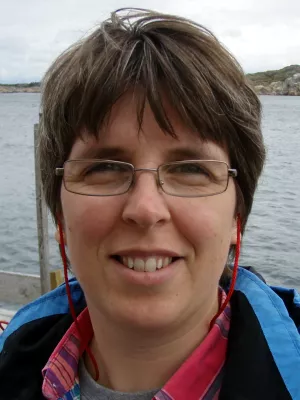
Helena Alexanderson
Professor

Holocene Chronology of the Brattforsheden Delta and Inland Dune Field, SW Sweden
Author
Summary, in English
Brattforsheden is a large glacifluvial deposit in southwestern Sweden and associated with it is one of Sweden's largest inland dune fields. Although the relative ages of the Brattforsheden deposits are well known, absolute ages from the area are few. In this study we have used optically stimulated luminescence (OSL), surface exposure (Be-10) and radiocarbon (C-14) dating to provide an absolute chronology for the deglaciation and for the Holocene development of the aeolian dunes. Our data show that the deglaciation took place just before 11 ka (11.5 +/- 0.6 ka OSL, 11.3 +/- 0.8 ka Be-10), in line with the C-14-based regional deglaciation age. Aeolian dunes started forming immediately after deglaciation and were active for at least 2000 years, well after vegetation had established. Renewed aeolian activity occurred 270-180 years ago, resulting in the deposition of sand sheets. Comparison between dating methods and studies of OSL dose distributions show that glacial, glacifluvial and littoral sediments suffer from incomplete bleaching and thus that mean OSL ages from such deposits overestimate the true depositional age. By using small aliquots and statistical age models, this effect can partly be countered. Also, some of the Be-10 ages appear too old, which may be due to previous exposure.
Department/s
- Quaternary Sciences
Publishing year
2015
Language
English
Pages
1-16
Publication/Series
Geochronometria
Volume
42
Issue
1
Document type
Journal article
Publisher
WIND-J WOJEWODA PUBLISHING CO.
Topic
- Geology
Keywords
- luminescence (OSL) dating
- surface exposure dating (Be-10)
- deglaciation
- aeolian
- Holocene
- Sweden
Status
Published
Project
- Lund Luminescence Laboratory
- Aeolian activity in Sweden: an unexplored environmental archive
Research group
- Lund Luminescence Laboratory
ISBN/ISSN/Other
- ISSN: 1897-1695

